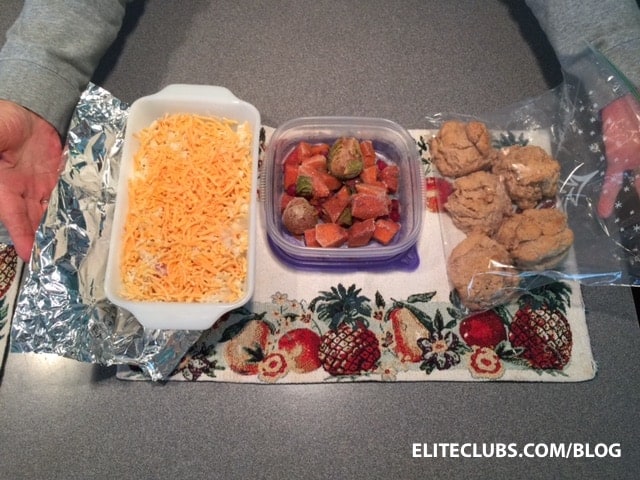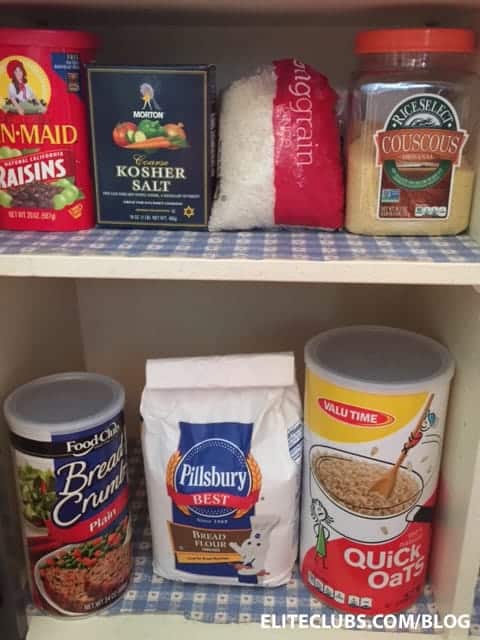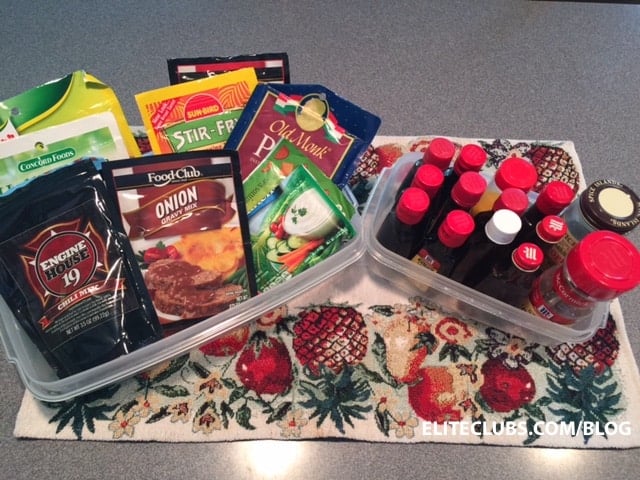
Most of us don’t want to be spending all day in the kitchen preparing food for our families. Nevertheless, we want homemade meals that taste good and are healthy. In my house it starts with, “what would you like for breakfast?” at which point we begin searching the cereal drawer, the fruit basket, and refrigerator to see if it is going to be a quick breakfast, or more preferably an egg, toast, and grapefruit type of day. That’s our favorite but there’s not always time for it. Does this sound like your house or do family members just find what they can and run out the door? The real question is, “what’s in your kitchen for quick and available meals?”
This thought about what is on hand to eat is one that occurs every day in most most homes. We all would like to think that we always have the answers to these questions, but often we don’t. We either don’t know and maybe these questions come up long after we have left the house. So, what are you to do and what are the best assets you have in the kitchen that is going to help out as you try to answer the question, “what’s to eat?”
You may be surprised at the answer. The best assets are not your stove or your oven as you might think, but rather the Refrigerator and the Pantry. The current research by a USDA food consumption survey group states, “that by knowing what you have on hand both as dry goods and in the refrigerator will help a great deal in the planning stage and purchasing stage of food shopping.” Imagine being in your kitchen and thinking about the activities of the week and what vital foods you will need to have on hand. So, how can you use both assets to assist you the best way?
To make the best use of time in the kitchen can be summed up using these helpful hints:
- Many grocery stores will provide you with shopping lists based on their store outline. You can use these to prepare your own list.
- Check first what is left from the previous week in the refrigerator, such as, small amounts of vegetables, fruits, leftovers from other meals and so on. You can quickly finish cutting up anything that is starting to look limp, place in freezer bag, and plan to use for future meals. These small packages can be a great savings when you use in upcoming meals. Plus, you know what you have on hand and what you need to purchase. Also, most refrigerators have defrosters attached and will dry out foods. Make sure everything is covered.
- Clean refrigerator shelves and drawers so that it will be clean when you bring home the fresh food.
- Make a list of what you have on hand and what you will need from the store.
- Plan a basic meal schedule for the week, take into consideration the activities for the week and what you will need available for meals. One other thought is to prepare meals that last for two days, therefore doubling your efforts. Using leftovers as planned-overs!
- Next, make a quick sweep of your recipes, whether they are in your head or in writing. What do you need to buy?
- Lastly, you will need to check your Pantry items to make sure you have these basics as well: flour, sugar, spices, extracts, pastas, canned soups, fruits and vegetables. These all play a vital role in being prepared to make key family meals.
- In the Pantry area, as long as you are looking for ingredients, this is a great time to make sure the Pantry shelves are clean, and that dry items, like flour and sugar, are well covered.
- Place items in the same area again when you return from the store. For example, the items for baking should be in the same area of your Pantry, the spices should be on the same shelves, etc.
- With your list in hand you are ready for the shopping; for a week or so, and not for just a day! This does not need to take long and should be assumed that it will need to be a flexible meal schedule. But what a relief, you have just saved yourself hours not going to the grocery store every day. You can also be sure, that you will be saving yourself lots of dollars as well.
Below are a few actual pictures of my Refrigerator and Pantry stocking techniques:
What do you do to make sure your kitchen is stocked and ready for a week of healthy meals? Some people make notes as they go along during the week, other people will begin by writing down meals that they would like to have in the future and then working towards having those needed ingredients on hand. Whatever you do, by planning ahead you will be saving time, money, and efforts for other aspects of your life!
Written by Rita Larsen, RDN, CD; Elite Sports Clubs Nutrition Educator & Diet Counselor
Rita is certified in Positive Psychology, University of Penn; has a BS in Dietetics from Kansas State University; and an Internship and Masters at the Indiana University Medical Center.
Schedule a Nutrition Consultation



